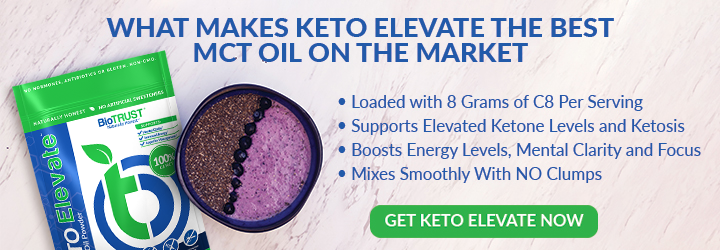What is the Intuitive Eating Diet? And Does it Work?

You’ve likely heard that 85 to 95% of people who go on diets fail. Diets can lead to weight loss in the short term, but within two to five years, most people (certainly not all), regain the weight they lost and often, more. (We would suggest that diets fail people rather than the other way around, but that’s another story for another time.) Despite the grim statistics, millions of people go on diets every year.
Due to the near-flawless failure rate combined with the fact that diets are synonymous with restriction, it’s not surprising that there is a backlash against what’s become known as “diet culture.” Many people are looking for an alternative—an anti-diet or an un-diet if you will. That’s where intuitive eating and the intuitive diet come into play.
The Major Flaw of Diet Plans
Registered dietitian, nutrition therapist, and co-author of the book Intuitive Eating: A Revolutionary Program that Works, which was first published in 1995, Elyse Resch says, “It’s time to let go of a dieting system that is toxic.”
Chronic dieting, such as restricting eating, counting calories, categorizing foods as “good” or “bad,” and skipping meals, she explains, can lead to disordered eating as well as guilt and shame surrounding the foods we eat and our own bodies.
People who have put their trust in the latest diet, fad, or trend—only to regain all the weight lost and more—may have learned to no longer trust their own bodies and intuition. They can feel like they need a prescriptive diet to follow (even when they know it probably won’t work over the long term). Otherwise, they could eat themselves off a cliff, gaining even more size or weight.
Yet restricting food intake—both types and amounts—can be ineffective when it comes to weight loss, and it may even be counterproductive as it can promote mental distress and even lead to increased unhealthy behaviors. 1
Intuitive Eating: The Alternative to Dieting?
What’s the alternative to dieting? Learning how to trust your body and be free to enjoy food and the pleasure that comes from it. That starts with learning how to tell the difference between real, physical hunger (such as a deep, intense feeling in your stomach) and hormonal hunger (often brought by or confused with fatigue or irritability that’s satisfied once you eat) and even emotional hunger (which can arise from sadness, loneliness, or boredom, causing you to reach for comfort foods, often accompanied by guilt and self-loathing even as you’re eating).
The intuitive diet was designed to help shift the focus away from weight loss and toward improving mental and physical health. 1
Indeed, the intuitive diet isn’t a diet at all—at least in the traditional, restrictive sense. There are no guidelines telling you what, when, or how much to eat. Instead, it’s all about learning to listen to the body’s cues and freeing the mind from the do’s and don’ts of dieting. It’s about eating when you’re hungry and stopping when you’re satisfied. It’s making you and you alone the expert of your body and the signals it’s delivering.
The 10 Principles of Intuitive Eating
With chronic dieting—and even with food rituals (such as just because food is on the table)—many people lose touch with the physical sensations that come from feeling hungry or full (or even really knowing what they like to eat). The goal of intuitive eating is to increase what scientists called “interoceptive awareness,” or the ability to perceive body cues.
To help promote a healthy attitude toward the food you eat (as well as your body image), Intuitive Eating provides ten key principles:
1) Reject the diet mentality/diet culture: Stop believing that there’s a perfect diet out there that works for everyone—including you—all the time. Intuitive eating is the anti-diet. It’s not about looking a certain way or seeing a specific number on the scale before you are worthy of love and acceptance.
A 2019 study has found that eating disorders are prevalent around the world, especially in women. And between the years 2000 and 2006 to 2013 to 2018, eating disorders increased by a worrisome 123%. 2 Many experts have tied this spike in disordered eating to the prevalence of diet culture—which tells us we need to be thin to win.
In addition, the research indicates that dieting itself can lead to future weight gain. 3 So, the goal of intuitive dieting is not to lose weight.
2) Honor your hunger: Hunger isn’t the enemy. It’s an important cue that deserves to be treated with respect. When you feel hunger pangs, respond by feeding the body and avoid allowing yourself to become over-hungry, which can lead to overeating.
3) Make peace with food: This isn’t war. Let go of all the rules around what you “should” or “shouldn’t” eat and allow food to be your friend. For example, start by ranking the foods you restrict or consider “bad.” Beginning with the “worst” food on the list, a couple of hours after eating, find a calm and quiet place to eat that food. Then eat as much of it as you’d like with no judgment. The intention is to end the power this food has over you.
According to Resch, “After a couple of days, all of my clients end up with really great balance. They want a salad because that instinct in your body wants balance.”
4) Challenge the food police: If you’ve ever dieted, you’ve likely given the “food police” free reign over your thoughts. You know, the ones that turn on the alarms if you even consider eating a food that’s “forbidden” and tell you how horrible you are if you ate it anyway.
But your worth is not based on what foods you eat or don’t eat. It’s time to gently tell those angry voices in your head that you don’t need the guilt trip. You are not ashamed of the food you eat or the shape of your body. (You may need help from a trained nutritionist or counselor if you are having trouble changing your self-talk to be more positive and loving.)
5) Feel your fullness: Just as your body tells you when it’s hungry, it tells you when it’s full. As you eat, focus on how you’re feeling, how the food tastes, and recognize when you’re satisfied. You can’t do that when you’re eating on the run, staring at your smartphone, or munching away as you work.
As much as possible, make eating meals a sacred time, free from outside distractions. Pause throughout the meal—even after just a few bites—and check in on how you feel. Put down your fork regularly as you eat to see how you’re feeling. Are you already experiencing signs of being full? When you are, no matter how much food is left on your plate, it’s time to stop. You can eat again later when you’re hungry.
6) Discover the satisfaction factor: Eating is supposed to be pleasurable. Enjoy food that tastes good to you and slow down to enjoy it. You’ll likely find that you need less food to feel satisfied. And if the food you’re eating doesn’t bring you pleasure, then there’s a good chance you will never feel satisfied even if you keep eating it.
7) Honor your feelings without using food: Many people use food to cope with uncomfortable feelings, at least from time to time. And that’s okay and understandable. Yet now that you’re becoming connected with your body, you can realize when you’re eating because of stress, sadness, anxiety, or other emotions. So, you’ll be better able to find other ways, unrelated to eating, to deal with those feelings. After all, food doesn’t “fix” feelings.
Before eating, for example, use the H.A.L.T. method. That is, figure out if you’re happy, angry, lonely, or tired. Explore your emotions instead of just giving in to a food craving. Perhaps you really do want that ice cream cone. Or, maybe what you really want is a hug from a friend. Instead of eating, ask your friend for that hug, or try meditating, taking a walk, calling a friend, playing with a pet, or spending time outdoors instead as you explore your emotions.
8) Respect your body: How often do you look in the mirror and criticize what you see? Instead of looking for what’s wrong with your body, recognize all it does for you, what you’re capable of, and how beautiful it is. It also means treating yourself with love, ensuring you are getting enough sleep, reducing stress, and doing things that make you happy.
9) Exercise—feel the difference: Exercise isn’t a punishment, a way to burn a certain number of calories, or correction for a “cheat” food. Find ways to move your body that are fun or enjoyable to you. And work on shifting the focus away from “weight loss” toward functional movements that allow you to feel strong, energized, happy, and healthy.
10) Honor your health—gentle nutrition: Yes, the foods you eat should taste good, but they should also help you feel good. Eat to support feeling energized, happy, and healthy, but also remember that one meal or snack isn’t going to make or break your health. Deep health is about your overall body of nutrition work over the long haul.
One important thing to remember is that these principles are guidelines, not rules. You don’t need to explore them in any particular order. And you can’t “mess up” or fail. You either win or you learn.
Is There Any Science Behind Intuitive Dieting?
There is a growing amount of research on intuitive dieting (often defined as eating when hungry, stopping when full, with no food restrictions unless medically necessary). Much of the research has been focused on college-aged women. In the studies, intuitive eating has been linked to:
- Healthier attitudes toward exercise, food, and the body
- Improved psychological health
- Lower body mass index
- Weight maintenance (not necessarily weight loss)
- Improved health markers (such as blood pressure, cholesterol levels, and inflammatory biomarkers)
- Possibly improved dietary intake or eating behaviors 4
- Improved body image and self-esteem
- Decreased anxiety and depression
- Enhanced quality of life
- Decreased body dissatisfaction (even in long-term dieters)
- Improved metabolic fitness
- Improved focus on health
- Increased ability to stick to the plan 1
- Less disordered eating, binging, or emotional eating 5
- Improved emotional functioning 6
- Decreased risk of chronic dieting and binge eating 7
- Increased levels of pleasure associated with food and eating
- Fewer food anxieties 8
- Decreased psychological distress 9
- An inverse association with becoming overweight or obese, especially in women 10
What Are the Pros of Intuitive Eating?
One of the biggest benefits of intuitive eating is that when practiced mindfully, people are better able to get in touch with their body’s needs, which typically leads to improvements in well-being and quality of life. As mentioned above, these same folks are more likely to appreciate their bodies, enjoy eating more, and have less disordered eating.
The intuitive diet encourages people to reconnect with their own bodies. And while it can be helpful for most anyone, it can be particularly beneficial for those who have lost touch and have trouble listening to their body’s cues, especially those with disordered eating due to chronic dieting.
Some of the benefits people who follow intuitive eating proclaim include:
- Learning how to honor hunger cues
- Learning what foods they like and don’t like (which may really surprise you—some people find they don’t really even like foods they used to eat uncontrollably in the past)
- Improved relationship with food
- Less guilt about the foods around them
- Letting go of the moral judgments around food
- Food tastes better and is more enjoyable
- Discovering how certain foods really make them feel
- Increased energy levels
- Fewer cravings
- Increased self-confidence
- Improved relationships with family and friends (due to a lack of stress and anxiety when it comes to eating together)
- Increased flexibility and being open to new experiences
- Improved relationship with exercise and moving their bodies
- No more “trigger” foods
- Improved ability to walk away from food on their plates
- Less judgment
- More headspace since they’re not always focused on food
- Improved self-compassion
- Discovering new ways to cope with emotions
- Improved mood
- Improved digestion (due to less stress)
- Being more mindful
- Increased life satisfaction
What Are the Cons of Intuitive Eating?
With all of these benefits, is there any downside? Are there some people who won’t do well with it? As with every diet, or anti-diet in this case, intuitive eating will work better for some people than others.
Some individuals who claim to be intuitive eaters don’t actually follow the principles and instead look at intuitive eating as a food free-for-all. They use intuitive eating to eat whatever they want whenever they want (rather than listening to and understanding their body’s hunger and fullness cues).
If you’re sitting down with a fork and a full sheet cake, then no matter how much your “intuition” says you should go for it, you probably need to step back and reassess. Eating a full cake in a single sitting isn’t going to honor your health. (You already know that.) And if you continue to eat like this regularly, you dramatically increase your risk of becoming severely obese and the numerous health complications that come along with that, including death.
While one of the primary principles of intuitive eating is to walk away from diet culture, if you are severely obese, then weight loss will be part of your health and wellness journey. A body is absolutely worthy of love at any size, but it may not be optimally healthy at any size. True, there is no “perfect size,” and there’s no one-size-fits-all diet. Indeed, there is strong evidence that our bodies have a preferred set-point weight range, which varies, sometimes dramatically, from person to person. You don’t need to be a size two or have a six-pack to be healthy, and some folks may be much healthier at a larger size.
Yet, just as we understand that someone who is extremely underweight is not healthy, the same is true of someone who is extremely overweight. If your weight is getting in the way of your ability to move and thrive, then working with a supportive doctor, health coach, or therapist may be the first step to improving your health. You can certainly explore some of the principles of intuitive eating, but it may not be the right plan for you right now.
Other people may not know enough about nutrition to follow a balanced plan. If you have grown up eating only foods that come out of boxes and drive-thru windows—with nary a vegetable, lean protein, or high-fiber food in sight—you need to learn some nutrition basics to honor your health and begin exploring and identifying nutritious whole foods that taste good to you.
This non-diet also isn’t right for people who are subject to food insecurity. If you don’t know when or where your next meal is coming from, then intuitive eating probably isn’t an option.
Intuitive eating is a practice that takes time and effort. It isn’t a quick fix. You have to learn how different foods and eating habits affect you. You will have to slow down and eat mindfully. And if you do have eating missteps, you need to practice curiosity and self-compassion (rather than beat yourself up). You may even find you gain weight as you are learning to get in touch with your body’s cues.
For many chronic dieters or those with eating disorders who have developed strong negative feelings about food, this can be a steep learning curve and may require working with a good nutritionist, dietitian, and/or therapist to help navigate through your relationship with food.
Finally, if your goal is to lose weight, then intuitive dieting may not provide the structure and guidance you seek. Some research has found that initially losing weight quickly can reinforce the necessary changes to keep the weight off over the long term. 11 And as mentioned above, with the steep learning curve, intuitive dieting is far from a quick fix.
For many people, intuitive dieting might not be the best place to start. If you don’t have an understanding of calorie- versus nutrition-density or if your diet has been primarily made up of processed junk food, then you will likely be better off learning some nutrition basics about what foods are more nutritious, more energizing, and better for brain functioning before you transition into intuitive eating.
One option is to begin your weight-loss journey with a more flexible dieting approach—with a focus on eating a “clean” diet 80 to 90% of the time. Then once you have a greater understanding of how food affects your body, you can transition over to a more intuitive approach. You’ll already have a good foundation of how nutritious foods make you feel—so you’ll be more likely to enjoy all of the benefits that come with the anti-diet, including a better relationship with food.
Will You Lose Weight with Intuitive Eating?
Maybe. Maybe not. But that’s not the point—the success of intuitive eating isn’t measured by pounds or inches lost. If you’re focused on the number on the scale, then at some point, you’re likely to focus on the food decision rather than on the cues your body is giving you, which contradicts the principles of intuitive eating.
Rather, intuitive eating is supposed to help you get back to your body’s set-point range—which could be more, less, or the same as what you currently weigh—while rebuilding a healthy body image and relationship with food.
The goals of weight-loss diets and intuitive eating aren’t all that compatible. One of the key goals of intuitive dieting is to let go of your need to control your size or diet while honoring your health.
Intuitive eating has been shown, however, to help people healthfully maintain their weight, lower body mass index, 4 and support long-term behavior change, leading to improved health risk factors, even in obese women. 12
How to Get Started with the Intuitive Diet
If you decide that intuitive eating is for you, how do you start? The first step in mindful eating is to, without judgment, start observing how you’re eating now. Do you eat when you’re hungry? Stop when you’re full? Do you eat because of emotions or because you’re bored?
Before you eat, ask yourself, on a scale of 1 – 10, how hungry you are (1 = starving and 10 = stuffed). Then eat when you’re hungry but not too hungry. And stop when you’re satisfied rather than very full.
As you get more familiar with your body’s hunger cues, start taking the time to deeply delve into each of the ten principles.
And remember, how you eat is just as important as what you eat. Are you treating your body with love? When you’re eating intuitively, sometimes that love could come in the form of a piece of cake. Other times, it could be a tender sirloin. And sometimes it may be in the form of a big salad. With intuitive dieting, your body is the expert. It’s perhaps easier said than done, but all you have to do is really listen.
With time, many intuitive eaters have developed better relationships with food, their bodies, and their minds. It allows them to release former food obsessions and stress to eat “normally”—enjoying a variety of foods at regular intervals. And for many people, it gets them off the diet hamster wheel of intense restriction followed by binging and feeling bad along with all the ups and downs in weight gain/loss.
In the end, intuitive dieting is about eating to live, rather than living to eat. Just remember, for most people, it takes time to get into the grove. It can take months, or even years, to get a full handle on all 10 of the principles and to really trust your instincts. So, go slowly and mindfully as you honor your health.





 7 Signs Your Body is Seriously Low on Collagen (not just wrinkles)
7 Signs Your Body is Seriously Low on Collagen (not just wrinkles) Health Expert: "Turmeric Doesn't Work (unless...)"
Health Expert: "Turmeric Doesn't Work (unless...)" 3 Warning Signs Your Probiotic Supplement is a Total Waste
3 Warning Signs Your Probiotic Supplement is a Total Waste

